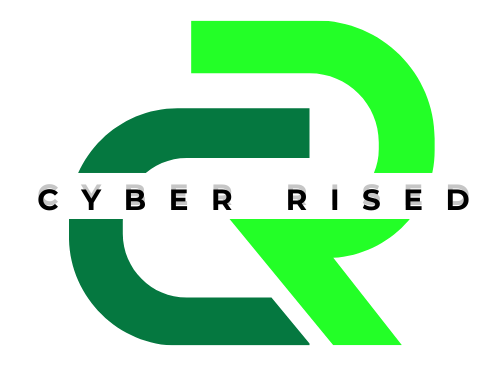
Credit card debt management is a vital concern today, as U.S. credit card debt has reached a staggering $1.14 trillion in 2024.
American households battling credit card debt now owe $21,367 on average. This number continues to climb as costs have jumped 20% since 2019, while median income has grown just 12%. The good news? People who stick to well-laid-out debt management plans see their credit scores climb by 62 points on average after two years.
This piece will help you tackle your credit card debt directly. You’ll discover proven ways to become debt-free in three to five years, from debt consolidation to smart payment strategies.
Want to take charge of your financial future? Let’s look at the quickest ways to manage and eliminate your credit card debt.
Understanding Your Credit Card Debt Situation
Getting started with credit card debt management requires a full picture of your financial situation. Research shows that 65% of people with credit cards carry balances, so knowing where you stand is vital.
Calculating Total Debt and Interest Rates
You should collect all your credit card statements and write down the balances and interest rates. Credit cards charge an average interest rate of 18%. A $10,000 balance with $200 monthly minimum payments would take more than seven years to pay off and cost you $8,000 extra just in interest.
Analyzing Spending Patterns and Triggers
The sort of thing i love comes from brain research about credit card spending habits. Studies reveal that credit cards light up reward centers in our brains, which leads to several spending triggers:
- We don’t feel the payment right away
- Spending money hurts less
- We spend more without thinking
- Digital payments make it too easy
On top of that, research shows people spend more money with credit cards than cash. Most of us think we can pay back more than we actually can.
Setting Realistic Debt-Free Timeline Goals
You need realistic debt-free goals based on what you earn versus what you owe. A practical goal looks like paying off $15,000 in credit card debt over three years with $500 monthly payments. This works better than an aggressive one-year plan that might fail. Breaking down your debt repayment into smaller goals helps you stay motivated. To cite an instance, if you have several cards, tackle one balance while paying minimums on others.
Leveraging Technology for Debt Management
Technology today gives us powerful tools to manage credit card debt better. Digital solutions help you track and pay off debt in the quickest way possible.
Best Debt Tracking Apps and Tools
Several apps work well to manage debt. Mint links all your financial accounts and gives you detailed debt tracking and budget management features. Undebt.it lets you choose from multiple debt payoff methods like debt snowball and avalanche approaches. The Debt Payoff Planner has helped users wipe out over $200 million in debt through individual-specific payment plans.
Automating Payments and Reminders
Automatic credit card payments help you avoid expensive mistakes. A single forgotten payment can lead to late fees up to $28 for first-time mistakes. Your credit score takes a hit when payments are more than 30 days late, and you might face penalty APRs. You should keep enough money in your account and set up low-balance alerts to avoid overdraft fees that usually cost $34.
Using AI-Powered Budgeting Solutions
AI-powered budgeting tools boost debt management with advanced features. These systems pull in and sort your transactions automatically, which keeps everything accurate and consistent. The technology adjusts to your changing income and expenses, so your budgets stay current without manual updates. These tools also warn you about potential overspending and show you how transactions affect your overall finances.
AI makes financial management more personal than ever. These platforms study your spending patterns, find ways you could save money, and give advice based on your specific financial situation. They use predictive analysis to show your progress toward goals like getting rid of credit card debt.
Strategic Debt Consolidation Methods
Debt consolidation provides a well-laid-out way to handle multiple credit card balances. You can expect interest rates between 6% to 36% on personal loans for debt consolidation, based on your credit profile.
Evaluating Debt Consolidation Loan Options
Personal loans combine multiple debts into one fixed monthly payment and work best for people with good credit scores. People with excellent credit scores (740-850) get the best terms. The total loan cost needs careful review before you pick a consolidation loan. This includes origination fees that range from 1% to 6% of what you borrow.
Balance Transfer Card Strategies
Balance transfer cards are a great way to get debt under control. These cards come with:
- 0% APR introductory periods that last 12 to 21 months
- Transfer fees between 3% to 5% of the moved balance
- Savings up to $956 on a $5,000 balance compared to standard credit card rates
Timing plays a vital role here. You’ll need to transfer your balances within 60 days after opening the account. The secret lies in paying off the transferred amount before the promotional period ends. Standard interest rates jump to 16% to 25% after that.
Debt Snowball vs. Avalanche Digital Calculators
Digital tools help you compare two main debt payoff methods. The avalanche method tackles your highest-interest debts first. The snowball method starts with your smallest balances. The avalanche method saves more money on paper, but research shows the snowball method’s quick wins keep people motivated longer.
Here’s a real-life example: A $20,000 balance with 20% APR and $250 monthly payments creates $1,134 in interest over two years. You could save $984 in interest costs through smart consolidation at 0% APR.
Accelerating Your Debt Payoff Journey
Extra income streams can boost your debt repayment by a lot. You can earn $15-$150 per hour as a freelancer, making it a great option for extra cash.
Side Hustle Opportunities in Digital Age
The digital world has opened up many ways to earn money. Here’s what you could make from popular side jobs:
- Virtual tutoring: $20-$60 per hour
- Pet sitting services: $10-$40 per visit
- House cleaning: $25-$50 per hour
- Car detailing: $50-$150 for standard packages
Cashback and Rewards Optimization
Credit card rewards can help you tackle debt faster. Wells Fargo cardholders can use their cash back to pay down mortgage payments . Rewards usually range from 1-5% on purchases, and you can use statement credits to reduce your outstanding balances.
Expense Tracking Technologies
Digital expense tracking tools are powerful allies in debt management. Apps can round up your purchases to the nearest dollar and apply the difference to your debt payments. These tools track your spending patterns and handle automatic payments to keep you moving toward a debt-free life.
Your side hustle earnings should go straight to debt payments through automatic transfers. You should start with one or two side gigs that fit your schedule to avoid burnout. Each venture needs careful tracking of earnings and expenses. This data shows your true profits and helps you make smart adjustments.
Conclusion
Credit card debt can feel overwhelming. You can become skilled at managing it through smart planning and consistent action. Modern technology and proven debt consolidation methods create a clear path to financial freedom.
Your path to success starts with understanding your situation. The right mix of tools and strategies makes all the difference. The debt snowball method offers quick wins, while AI-powered budgeting solutions help maximize your progress toward debt-free goals.
Note that countless people have eliminated their credit card debt using these methods. Your commitment to tracking expenses, smart consolidation, and extra income generation will reduce your balances steadily. These steps help build stronger financial habits for your future.
Stick to your chosen debt management strategy. Celebrate the small wins along the way. Your credit card balances will shrink until you achieve complete financial freedom.
FAQs
Q1. What is the most effective strategy for managing credit card debt? The most effective strategy involves a combination of approaches. Start by understanding your total debt and interest rates, then create a realistic repayment plan. Use debt tracking apps to monitor progress, consider debt consolidation or balance transfer options, and look for ways to increase income through side hustles. Consistently paying more than the minimum and avoiding new debt are crucial steps in successful credit card debt management.
Q2. How can technology help in managing credit card debt? Technology plays a significant role in debt management. Debt tracking apps like Mint and Undebt.it help you monitor your progress and stick to repayment plans. AI-powered budgeting tools can analyze your spending patterns and offer personalized recommendations. Additionally, setting up automated payments can prevent late fees and help maintain a consistent repayment schedule.
Q3. What are the pros and cons of debt consolidation? Debt consolidation can simplify repayment by combining multiple debts into one payment, often with a lower interest rate. This can save money and make budgeting easier. However, it’s important to consider factors like origination fees for consolidation loans and balance transfer fees for credit cards. The key is to ensure that the consolidation method you choose results in overall savings and fits your financial situation.
Q4. Is the debt snowball or debt avalanche method better for paying off credit cards? Both methods have their merits. The debt avalanche method, which targets highest-interest debts first, often results in more mathematical savings. However, the debt snowball method, focusing on smallest balances first, can provide stronger psychological motivation through quick wins. The best choice depends on your personal preferences and what will keep you most motivated in the long run.
Q5. How can I accelerate my credit card debt payoff? To accelerate your debt payoff, consider increasing your income through side hustles like freelancing, virtual tutoring, or pet sitting. Optimize your credit card rewards by redeeming cash back towards debt payments. Use expense tracking technologies to identify areas where you can cut spending and redirect that money towards debt. Remember to maintain a balance to avoid burnout and ensure consistent progress towards becoming debt-free.





